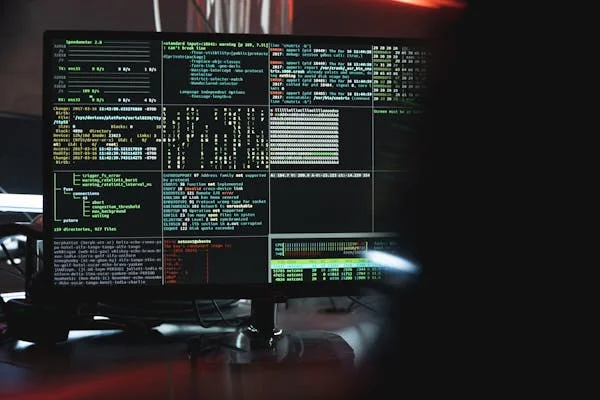Introduction
Robocopy commands, short for “Robust File Copy,” is a powerful and flexible file copying tool built into Windows. It has become a go-to utility for system administrators, power users, and IT professionals. Unlike traditional file copy commands like copy and xcopy, Robocopy is designed to handle complex and large-scale file transfer operations while offering reliability, speed, and advanced features. Whether you’re managing large data migrations, automating file backups, or performing complex directory synchronization, Robocopy is one of the most reliable and versatile tools available.
In this article, we will dive deep into the Robocopy tool, exploring its basic functions, advanced features, syntax, best practices, and practical examples. By the end of this article, you will understand how to harness the full power of Robocopy to streamline your file management tasks.
What is Robocopy?
Robocopy is a command-line file copy tool that was first introduced in Windows NT 4.0 Resource Kit and became a part of the Windows operating system in later versions, starting from Windows Vista and Windows Server 2008. It is designed to solve the limitations of the basic file copying tools like copy and xcopy.
Robocopy is much more than just a file copying tool. It provides robust features such as multithreaded copying, automatic retries on failure, file attribute preservation, directory mirroring, and much more. This makes Robocopy particularly useful for IT administrators and power users dealing with large data transfers or backups.
Basic Features of Robocopy
Before we dive into the commands, let’s take a look at the primary features of Robocopy:
- Resilient Copying: Robocopy automatically retries a file transfer in case of failure. By default, it retries 1 million times, which ensures that interrupted operations can be resumed automatically.
- Multithreaded Copying: Robocopy can copy multiple files at once, which significantly boosts the performance, especially when dealing with large volumes of files.
- File Attributes Preservation: It can copy not only files but also file attributes, including timestamps, permissions, and NTFS ACLs (Access Control Lists).
- Mirroring Directories: Robocopy can mirror the source directory to the destination, making the destination a replica of the source.
- Error Handling: With built-in retry mechanisms and logging features, Robocopy is ideal for complex file operations that require precise error handling and monitoring.
- Copying with Security Information: Robocopy allows copying files along with their security information, including file ownership and auditing settings.
Syntax of Robocopy Command
The basic syntax of a Robocopy command is:
robocopy <source> <destination> [<file>[ …]] [<options>]
Here’s a breakdown of each element in the command:
- <source>: The path of the source directory you want to copy from. This can be either a local or network directory.
- <destination>: The path of the destination directory where you want to copy files to.
- <file>: Specifies the files to copy. You can use wildcards (like * or ?) to specify multiple files or file types.
- <options>: Robocopy provides several command-line options that modify the behavior of the copy operation.
Commonly Used Robocopy Options
Robocopy comes with an extensive list of options that allow you to customize the behavior of your file transfers. Here are some of the most commonly used options:
/E
- Purpose: Copies all subdirectories, including empty ones.
- Use Case: When you want to copy an entire directory structure, including empty directories.
/MIR
- Purpose: Mirrors the source directory to the destination. It deletes files in the destination that are not present in the source.
- Use Case: This is particularly useful when you want to create an exact copy of a directory or synchronize directories.
/COPYALL
- Purpose: Copies all file attributes, including data, timestamps, permissions, NTFS ACLs, owner information, and auditing information.
- Use Case: Ideal for creating a full backup or clone of a directory with all its metadata.
/DCOPY:T
- Purpose: Copies directory timestamps.
- Use Case: When you need to preserve the timestamp of directories while copying them.
/Z
- Purpose: Enables Robocopy’s restartable mode, meaning that if the copy operation is interrupted, it can resume from where it left off.
- Use Case: Useful for large file transfers or unreliable networks.
/MT[:n]
- Purpose: Specifies the number of threads to use for copying files. The default is 8 threads, but you can increase it to speed up the copy process.
- Use Case: When you need to copy files quickly and have a multi-core processor to handle the load.
/R:n
- Purpose: Specifies the number of retry attempts on failed copies. The default is 1 million retries.
- Use Case: Helps to ensure files are copied successfully even if they encounter temporary errors.
/W:n
- Purpose: Specifies the wait time between retries in seconds. The default is 30 seconds.
- Use Case: When you want to adjust the time Robocopy waits before retrying a failed operation.
Practical Robocopy Commands
Let’s go through some practical examples of how to use Robocopy for various file management tasks.
1. Basic File Copy
If you want to copy all files from one directory to another, you can use the following command:
robocopy C:\Source D:\Destination
This command copies all files from the C:\Source folder to the D:\Destination folder, but does not copy subdirectories.
2. Copy Files and Subdirectories (Including Empty Directories)
To copy both files and subdirectories (including empty directories), use the /E option:
robocopy C:\Source D:\Destination /E
This command will copy everything, including subdirectories and empty directories, from C:\Source to D:\Destination.
3. Directory Mirroring
To mirror the entire source directory to the destination (i.e., make the destination an exact replica of the source), use the /MIR option:
robocopy C:\Source D:\Destination /MIR
This will copy all files and subdirectories and also delete files in the destination that no longer exist in the source.
4. Multithreaded Copying
If you have multiple cores on your computer and want to speed up the copy process, use the /MT option to enable multithreaded copying:
robocopy C:\Source D:\Destination /MT:16
This command uses 16 threads to copy files concurrently, speeding up the process significantly.
5. Copying Files with Security Information
To copy files along with their NTFS security attributes (such as file permissions), use the /COPYALL option:
robocopy C:\Source D:\Destination /COPYALL
This ensures that file security settings, such as user permissions and auditing information, are preserved during the copy.
6. Resuming Interrupted Copy Operations
If a file copy operation is interrupted, you can use the /Z option to resume the copy from where it left off:
robocopy C:\Source D:\Destination /Z
This ensures that if the operation is interrupted, Robocopy will restart from the point of failure, saving time and preventing data loss.
Advanced Robocopy Usage
While the basic commands above cover most scenarios, Robocopy has a variety of advanced options that make it suitable for more complex file management tasks. Let’s explore some advanced usage scenarios.
1. Syncing Directories with Logging
To sync directories while keeping track of the operation with detailed logging, use the following command:
robocopy C:\Source D:\Destination /MIR /LOG:C:\robocopy_log.txt
This command mirrors the C:\Source directory to D:\Destination and logs all activities to a file (robocopy_log.txt).
2. Copying Only Modified Files
To copy only files that have been modified (i.e., files with a timestamp newer than the destination), use the /XO option:
robocopy C:\Source D:\Destination /XO
This will skip files that are already present in the destination and have the same or older timestamps, making it ideal for incremental backups.
3. Excluding Specific Files or Directories
If you want to exclude certain files or directories from the copy operation, use the /XF (for files) or /XD (for directories) options. For example:
robocopy C:\Source D:\Destination /E /XD C:\Source\Temp
This command copies all files and subdirectories from C:\Source to D:\Destination but excludes the Temp subdirectory.
Best Practices for Using Robocopy
To get the best results from Robocopy, here are some best practices to follow:
Test with the /L Option: Always use the /L option to test your commands before executing them. This will list the actions Robocopy will take without actually copying or deleting any files. For example:
robocopy C:\Source D:\Destination /MIR /L
Use Logging for Large Transfers: When performing large file transfers or complex tasks, always enable logging to capture detailed information about the operation.
robocopy C:\Source D:\Destination /E /LOG:C:\robocopy_log.txt
- Avoid Unwanted File Deletions: When using the /MIR option, be careful as it will delete files in the destination that don’t exist in the source. If you don’t want this behavior, consider using the /E option instead.
- Run Robocopy as Administrator: To copy files with security settings and system files, run Robocopy as an administrator.
Conclusion
Robocopy commands is a robust and versatile file copy tool that offers far more functionality than traditional copy commands in Windows. With its ability to handle large data sets, support for multithreaded copying, and advanced options like error handling and file attribute preservation, Robocopy is a must-have tool for system administrators and advanced users.
By understanding and utilizing the various Robocopy commands and options covered in this guide, you can efficiently manage your file transfers, backups, and directory synchronization tasks. Robocopy’s flexibility and reliability make it an invaluable tool for both everyday tasks and complex data management operations.
Whether you’re copying files across local directories, syncing remote servers, or performing regular backups, Robocopy is equipped to handle it all with ease.






